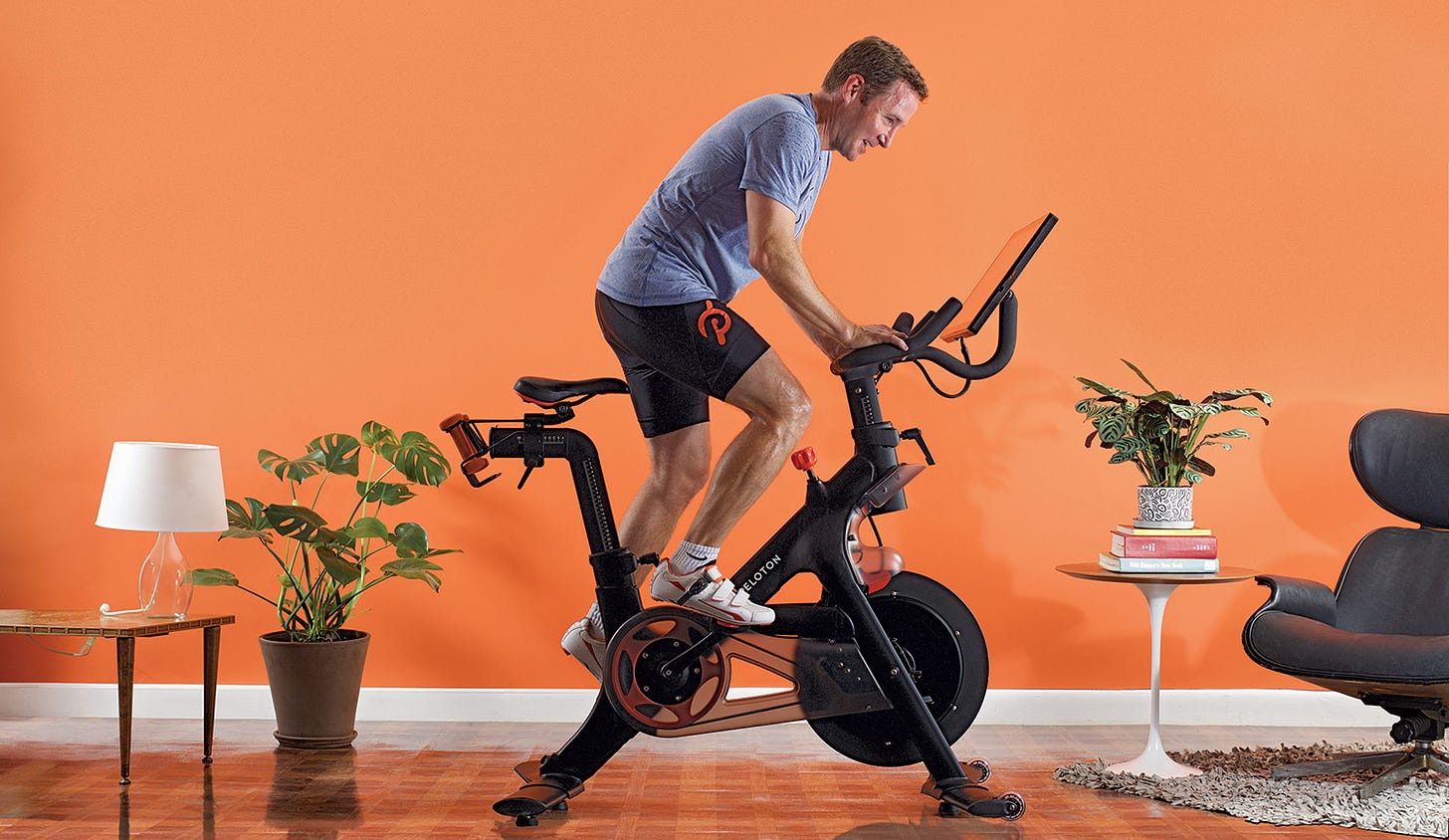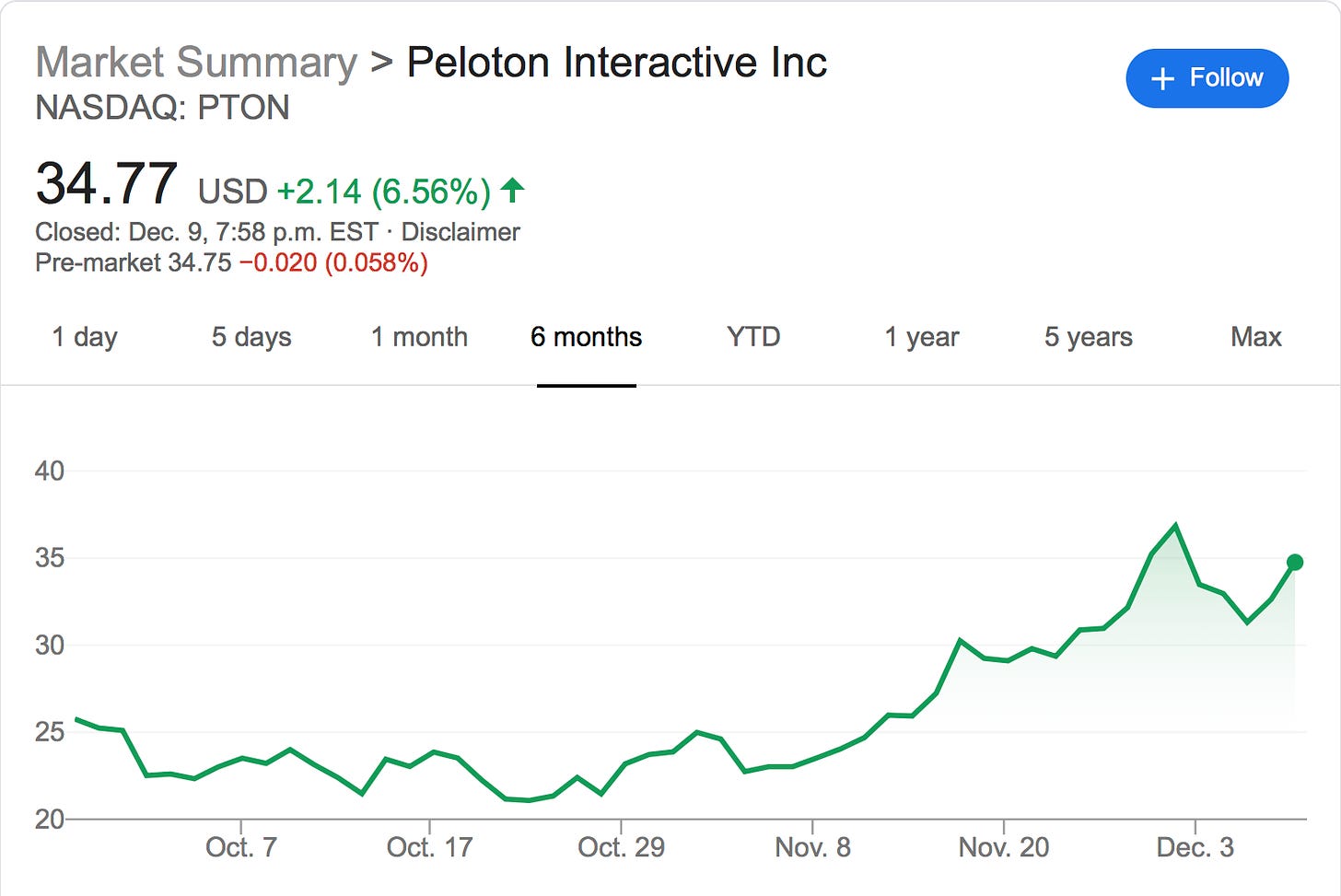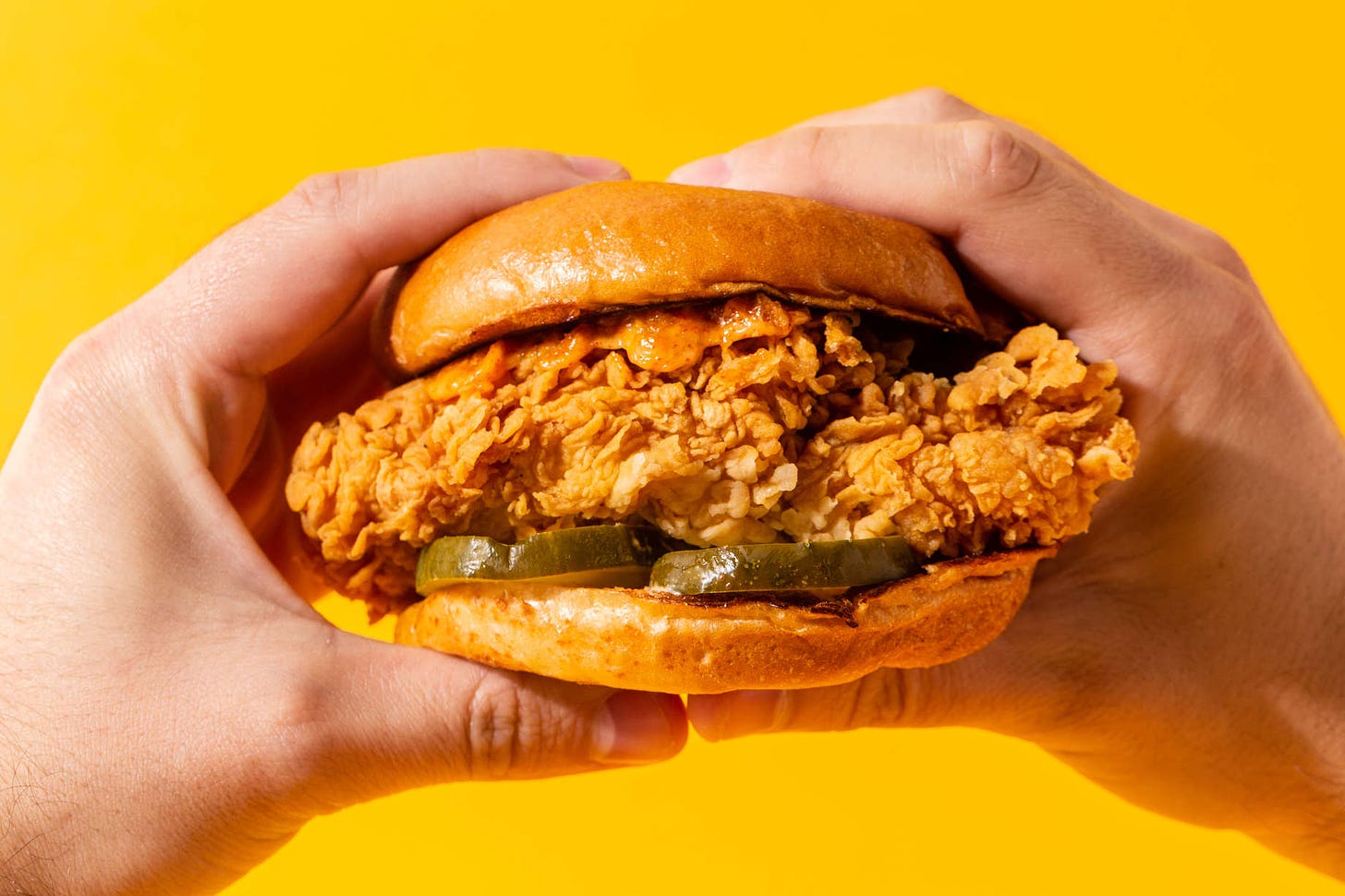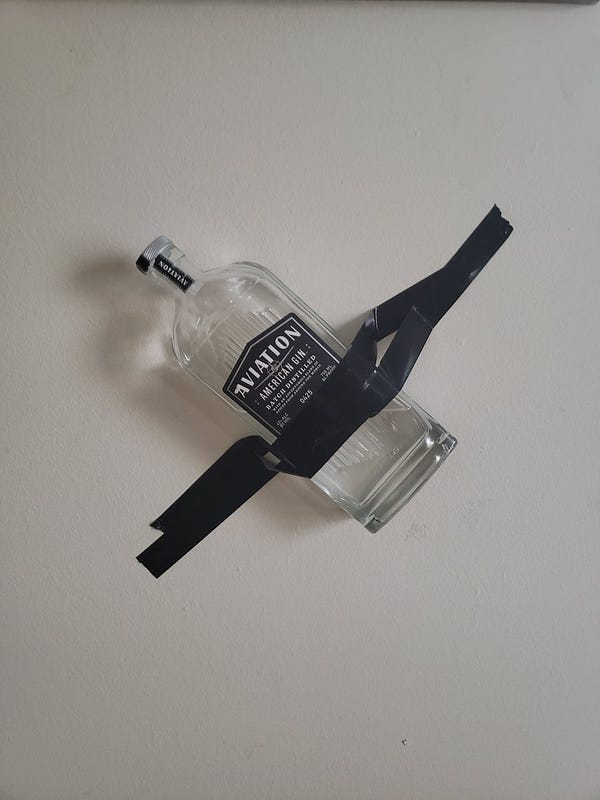Peloton, Popeyes, and Viral Advertising
Welcome to Marketing BS, where I share a weekly article dismantling a little piece of the Marketing-Industrial Complex — and sometimes I offer simple ideas that actually work.
If you enjoy this article, I invite you to subscribe to Marketing BS — the weekly newsletters feature bonus content, including follow-ups from the previous week, commentary on topical marketing news, and information about unlisted career opportunities.
Thanks for reading and keep it simple,
Edward Nevraumont

Peloton and the Media Cycle
Last week, so many marketing-related stories captured news headlines that I could not decide which one to feature in Marketing BS. In the end, I chose to go with the story that best illustrates some key marketing concepts. Bonus: the most instructive story was also the one that generated the most laughter.
If you haven’t already watched this commercial from Peloton (manufacturer of an upscale stationary bike), take a quick look:
As of today, the YouTube version of the commercial has amassed 7.6 million views, as well as 16,000 thumbs up votes. But…there are also 21,000 thumbs down votes. Moreover, the user comments were overwhelmingly negative — until Peloton deleted them and turned off the ability to leave comments.
How did the wheels come off this holiday ad campaign?
The initial response to Peloton’s video was actually tepid. On November 12, the company released the ad on Twitter. After two weeks, the post attracted modest numbers: 240,000 views, 81 retweets, and 623 likes.
Before long, the social media backlash began. On December 1, Samuel Moen — an architect known for cracking Twitter jokes — posted the Peloton commercial with the comment, “this ad is making me lose my goddamn mind.” The video link on Moen’s page has racked up 3.3 million views — more than 13 times the number of people who watched the commercial on Peloton’s own Twitter account.
Moen’s post started a chain reaction of other mocking responses:
Comedian Eva Victor’s satirical video on Twitter garnered 4.1 million views.
Saturday Night Live included Peloton jokes in both the opening sketch and the Weekend Update segment.
Hollywood star Ryan Reynolds joined the fun, posting a parody video to promote Aviation Gin — a company he co-owns. Aviation scored some major media attention with their commercial, which not only grabbed the most views of the entire media cycle (9.6 million on Twitter plus 4.3 million on YouTube), but they also managed to recruit the same actress from the original Peloton ad.
By the first few days of December, media outlets jumped on the story and cultural pundits articulated the problematic aspects of the Peloton campaign.
Business Insider called the ad “awkward” and “confused.”
Buzzfeed shared a collection of sarcastic tweets from people, including descriptions of the ad as “dystopian.”
The New York Times compared the commercial to an episode of Netflix’s Black Mirror.
Did Peloton Really Crash?

What can we learn from the public reaction to the Peloton campaign? If we cut through the BS, how should we judge the true impact of the commercial: a terrible idea that destroyed the company’s brand equity, or a great win that drew significant attention to their products?
CBS claims that the ad cost the company $1.6 billion in market value:
The high-end exercise equipment maker has lost about $1.6 billion in market value following a controversial TV ad that some have bashed as sexist, classist and promoting an unhealthy body image. Although the spot originally ran in early November, Peloton shares have lost 15% since Monday, when the ad made the rounds on social media.
Let’s take a quick look at Peloton’s stock price over the last six months:

Peloton’s value remained effectively unchanged on both the day the commercial was launched on Twitter ($24.04 to $24.69) and the day it was posted on YouTube ($29.10 to $29.80). The stock price hit an all-time high of $36.84 on December 2, before sliding — ostensibly due to the media backlash — down to $32.63. As of yesterday’s close, Peloton’s stock was valued at $34.77, much higher than its price one month ago, before any of the controversy began.
Instead of waiting for the social media storm to pass, Peloton continued to move forward with new product announcements. On December 4, Peloton released apps for Amazon Fire TV and Apple Watch; furthermore, they slashed the cost for their digital-only subscriptions. I expect that price changes and product innovations will sway their stock price with far more influence than Twitter criticism or parody videos.
My conclusion: I don’t think the Peloton ad has affected the stock price one way or the other.
Although the commercial had a limited impact on stock value, the media attention delivered millions of free brand impressions. I assume Peloton’s “awareness” has increased significantly this month.
But how much does that awareness really matter?
Last week, Morning Consult published their annual “definitive measure of brand growth” list for 2019. They define brand growth as an increase in “consideration” (i.e., the percentage of people who, when asked “which brands would you consider buying in the next year,” answered with that specific brand).
Here is their top 10 list in consideration:
DoorDash
White Claw
Postmates
Impossible Burger
Venmo
Kind
Ring
Cash App
Purple
Amazon Prime
And here is their list for the top growth in awareness:
Juul
DoorDash (number 1 on the above list)
White Claw (2)
Postmates (3)
Impossible Burger (4)
UberEats
Venmo (5)
Purdue
Ring (7)
Purple (9)
Seven of the ten brands are shared between both lists — and in exactly the same order. Essentially, growing awareness follows a similar trajectory as growing consideration.
Notably, two brands grew their level of awareness without a commensurate rise in consideration, and I covered both of them in recent Marketing BS newsletters — vaping startup Juul and coworking platform WeWork. Without question, the scale of Peloton’s backlash pales in comparison to the wrath directed at Juul and the ridicule pointed at WeWork.
For brands with high-profile reputations, engaging with controversy is usually a risky proposition with limited upside. For instance, Coca-Cola’s brand awareness is already at the highest level possible, so any connection to controversy is more likely to reduce consideration on net. But with a small company, or even a mid-sized company like Peloton, the increased awareness that accompanies controversy can often overpower any decreases in consumer consideration.
As I wrote in Tumblr and Unseemly Arbitrage,
A fundamental truism in marketing: small companies can get away with things that big companies cannot. Back in 2011, The Economist shared a study that illustrated how negative publicity usually hurt large multinationals, but actually helped small firms.
The rationale? For massive companies, bad publicity will tarnish their well-established reputation or brand. Small firms, on the other hand, don’t usually have much of a reputation or brand to ruin. Negative publicity could damage their (already insignificant) reputation, BUT it also raises their awareness. The increase in awareness is worth more than any harm resulting from how potential customers learned about the company.
Small companies (with weak brands) should capitalize on this principle, taking more risks that might offend more people.
I am relatively confident that the amount of free press Peloton received for their “tone deaf” ad will provide a net (very) positive for their business. Peloton themselves seems to agree. They opted against pulling the ad, and their spokesperson issued a statement defending the spirit of their campaign:
“We constantly hear from our members how their lives have been meaningfully and positively impacted after purchasing or being gifted a Peloton Bike or Tread, often in ways that surprise them,” a company representative said in a statement Wednesday.
“Our holiday spot was created to celebrate that fitness and wellness journey,” the statement said. “While we’re disappointed in how some have misinterpreted this commercial, we are encouraged by — and grateful for — the outpouring of support we’ve received from those who understand what we were trying to communicate.”
Overall, Peloton broke away from the pack with some increased brand awareness, and they refused to backpedal on the tone of their commercial. Peloton seems right on track for 2020, so why shouldn’t every company aim for controversial and viral content?
Lightning Rarely Strikes Twice

Earlier this year, fast food chain Popeyes Louisiana Kitchen introduced a new chicken sandwich that attracted a much, much bigger buzz on Twitter than Peloton’s holiday commercial. Although many social media trends remain confined to the digital realm, interest in the new menu item carried over into the real world: restaurants were overwhelmed by lineups that stretched around the block. In fact, many stores sold out their entire supply of chicken, which only fuelled consumer interest to try the sandwich.
Popeyes originally planned to launch an extensive television campaign featuring the product (to drive up “consideration”), but that strategy was made redundant by the viral social media attention. When you already have queues around the block and shortages of the key ingredient, luring even more traffic into the store is not the problem you need to be solving…
A growing force in the fast food industry, Popeyes enjoyed an incredible year. So what lessons did they learn to help them plan for 2020? Consider the statement from CMO Fernando Machado:
“Normally we do a lot of TV, a little bit of digital, and really push on launch — here we have the most successful product launch since I started here six years ago, and it involved zero TV advertising… It was an unusual approach for us, which will help shape other launches in the future.”
By all means, Popeyes should attempt to spark social media buzz about their next product launch. But to imagine you can replicate the success of a viral trend? That belief is foolish. Historically, Popeyes has allocated 80–90% of their marketing budget to television ads.
Good idea: dropping your TV spend when your product launch gained widespread social media attention.
Bad idea: assuming that you no longer need to budget much money for television ads because you trust a future tweet will go viral.
By their very nature, viral campaigns are exceedingly rare. Believing they can be duplicated is never a good strategy. Of course, that doesn’t mean you shouldn’t try.
Over the weekend, for example, Aviation Gin followed up their Peloton parody with a tweet referencing the notorious story of a banana duct taped to a gallery wall — and valued at $120,000.


The response has been quiet: just over 500 retweets and 6700 likes — a far cry from the 14 million views for their Peloton video.
In the same way that banking on viral success is an imperfect strategy, so too is planning to court controversy. Earlier this year, Burger King ran a promotion offering Whoppers for a penny to anyone who ordered one (via an app) from inside a McDonald’s location. The edgy-yet-playful campaign captured a lot of attention. But other attempts to generate controversy — like Burger King’s Brexit bus ad — failed to captivate public interest.
I will close with some key takeaways from viral efforts:
You never know, so you may as well try.
What seems obvious after the fact is never clear before launch.
You should never factor “viral” impacts into your company’s budget any more than you should plan your family’s finances around the certainty that you will win the lottery next year.
Keep is simple,
Edward
If you enjoyed today’s newsletter, I encourage you to click the little heart button below the “Subscribe Now” box. Thanks!
Edward Nevraumont is a Senior Advisor with Warburg Pincus. The former CMO of General Assembly and A Place for Mom, Edward previously worked at Expedia and McKinsey & Company. For more information, including details about his latest book, check out Marketing BS.


